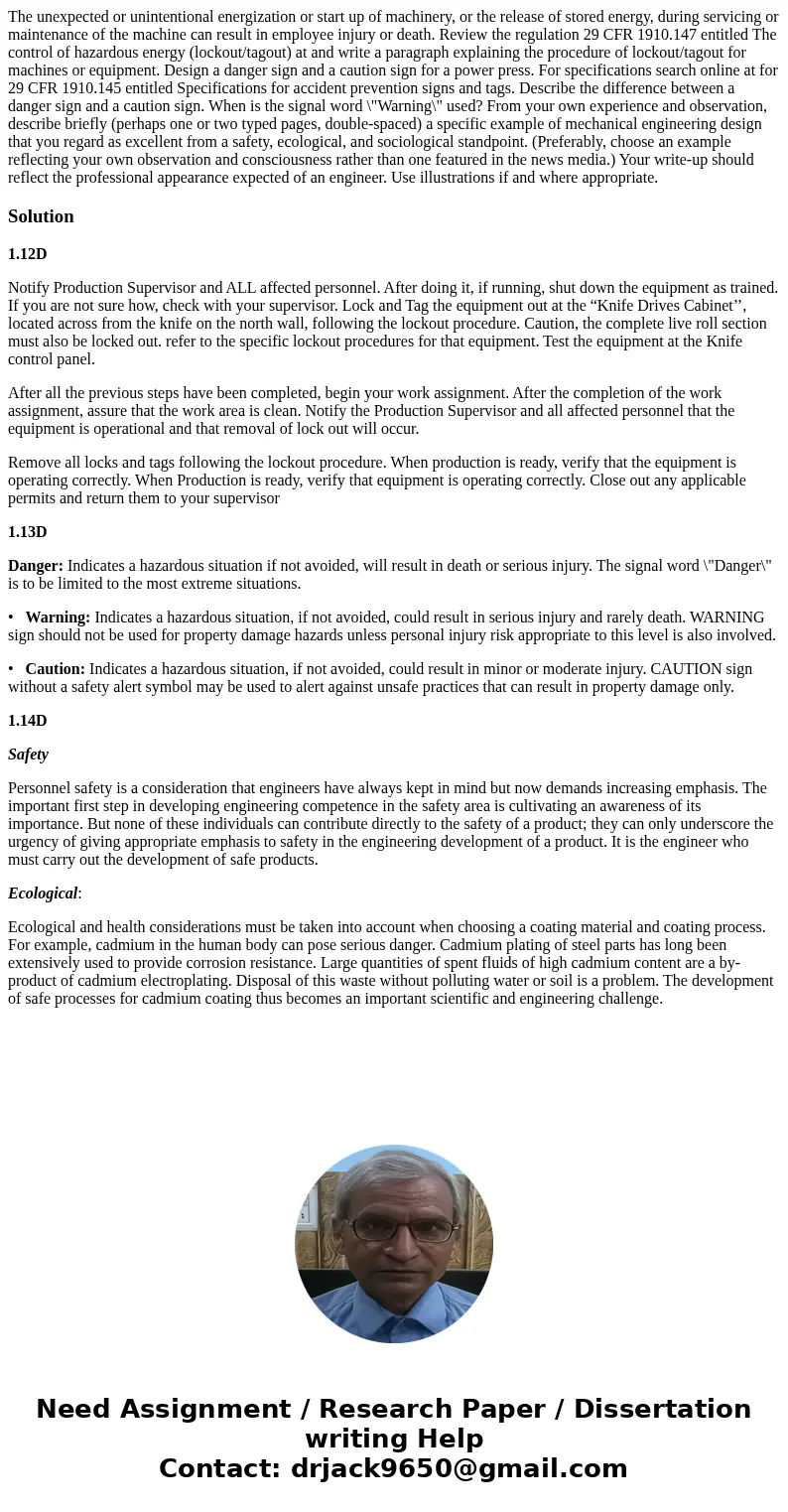The unexpected or unintentional energization or start up of
Solution
1.12D
Notify Production Supervisor and ALL affected personnel. After doing it, if running, shut down the equipment as trained. If you are not sure how, check with your supervisor. Lock and Tag the equipment out at the “Knife Drives Cabinet’’, located across from the knife on the north wall, following the lockout procedure. Caution, the complete live roll section must also be locked out. refer to the specific lockout procedures for that equipment. Test the equipment at the Knife control panel.
After all the previous steps have been completed, begin your work assignment. After the completion of the work assignment, assure that the work area is clean. Notify the Production Supervisor and all affected personnel that the equipment is operational and that removal of lock out will occur.
Remove all locks and tags following the lockout procedure. When production is ready, verify that the equipment is operating correctly. When Production is ready, verify that equipment is operating correctly. Close out any applicable permits and return them to your supervisor
1.13D
Danger: Indicates a hazardous situation if not avoided, will result in death or serious injury. The signal word \"Danger\" is to be limited to the most extreme situations.
• Warning: Indicates a hazardous situation, if not avoided, could result in serious injury and rarely death. WARNING sign should not be used for property damage hazards unless personal injury risk appropriate to this level is also involved.
• Caution: Indicates a hazardous situation, if not avoided, could result in minor or moderate injury. CAUTION sign without a safety alert symbol may be used to alert against unsafe practices that can result in property damage only.
1.14D
Safety
Personnel safety is a consideration that engineers have always kept in mind but now demands increasing emphasis. The important first step in developing engineering competence in the safety area is cultivating an awareness of its importance. But none of these individuals can contribute directly to the safety of a product; they can only underscore the urgency of giving appropriate emphasis to safety in the engineering development of a product. It is the engineer who must carry out the development of safe products.
Ecological:
Ecological and health considerations must be taken into account when choosing a coating material and coating process. For example, cadmium in the human body can pose serious danger. Cadmium plating of steel parts has long been extensively used to provide corrosion resistance. Large quantities of spent fluids of high cadmium content are a by-product of cadmium electroplating. Disposal of this waste without polluting water or soil is a problem. The development of safe processes for cadmium coating thus becomes an important scientific and engineering challenge.

 Homework Sourse
Homework Sourse